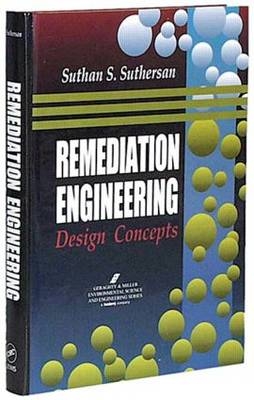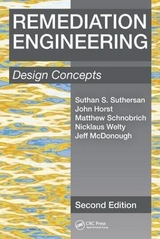
Remediation Engineering
Crc Press Inc (Verlag)
978-1-56670-137-2 (ISBN)
- Titel erscheint in neuer Auflage
- Artikel merken
In many cases, the application of in situ technologies evolved as a necessity from a cost perspective. However, the basic understanding of the mechanisms and theory behind these technologies was treated as a "black box." Although we have seen some tremendous successes in the application of remediation technologies over the past several years, we have also seen many cases in which a technology has been incorrectly or inappropriately applied. In most cases, this misapplication has been the result of a poor understanding of the basic concepts and mechanisms behind the technologies. Without proper understanding, the potential for misapplication of technologies remains a serious economic and technical threat.
Remediation Engineering
Introduction
Practice of Remediation Engineering
Contaminant Characteristics and Partitioning
Introduction
Contaminant Characteristics
Hydrodynamic Processes
Transport in the Unsaturated Zone
Abiotic Processes
Biotic Processes
Summary
Soil Vapor Extraction
Introduction
Governing Phenomena
Applicability
System Design
Bioventing
Monitoring Requirements
Vapor Treatment Technologies
In Situ Air Sparging
Introduction
Governing Phenomena
Applicability
Description of the Process
System Design Parameters
Pilot Testing
Monitoring Considerations
Process Equipment
Modifications to Conventional Air Sparging Application
Cleanup Rates
Limitations
Knowledge Gaps
Summary of Case Studies in the Literature
In Situ Bioremediation
Introduction
Microbial Metabolism
Microbial Reactions and Pathways
Biodegradation Kinetics and Rates
Environmental Factors
In Situ Bioremediation Systems
Biomodeling
Primary Knowledge Gaps
Vacuum-Enhanced Recovery
Introduction
Process Description and Basic Principles
Mass Removal Mechanisms
Applicability of the Technology
Pilot Test Procedures
System Design
Limitations
Case Study
In Situ Reactive Walls
Introduction
Description of the Process
Design Approaches
Case Study
Literature Reportings
In Situ Reactive Zones
Introduction
Types of In Situ Reactions
Aquifer Parameters and Transport Mechanisms
Design of In Situ Reactive Zones
Regulatory Issues
Future Work
Case Study
Hydraulic and Pneumatic Fracturing
Introduction
Applicability
Description of the Process
Feasibility Evaluation
Pilot Testing
System Design
Integration with Other Technologies
Phytoremediation
Introduction
Phytoremediation Mechanisms of Organic Contaminants
Phytoremediation Mechanisms of Heavy Metals
Phytoremediation of Nitrogen Compounds
Field Applications of Phytoremediation
Limitations and Knowledge Gaps
Pump and Treat Systems
Introduction
Definition of the Problem
Screening of Options
Treatment System Engineering
Permitting
Stabilization and Solidification
Introduction
Potential Applications
Testing Required to Evaluate Wastes Before and After Stabilization/Solidification
Field Applications
Appendices
Appendix A: List of Potential Remediation Technologies
Appendix B: Description of Flow Devices
Appendix C: Physical Properties of Some Common Environmental Contaminants
Appendix D: Environmental Degradation Rates for Selected Organic Compounds
Index
| Erscheint lt. Verlag | 24.10.1996 |
|---|---|
| Zusatzinfo | 39 Tables, black and white |
| Verlagsort | Bosa Roca |
| Sprache | englisch |
| Maße | 178 x 254 mm |
| Gewicht | 839 g |
| Einbandart | gebunden |
| Themenwelt | Naturwissenschaften ► Biologie ► Ökologie / Naturschutz |
| Technik ► Bauwesen | |
| Technik ► Umwelttechnik / Biotechnologie | |
| ISBN-10 | 1-56670-137-6 / 1566701376 |
| ISBN-13 | 978-1-56670-137-2 / 9781566701372 |
| Zustand | Neuware |
| Haben Sie eine Frage zum Produkt? |
aus dem Bereich



